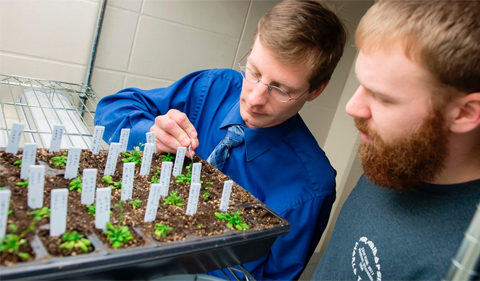The Environmental and Plant Biology Colloquium Series presents Dr. Derek Gingerich on “Seeing Red: BTB/CUL3 E3 Ubiquitin Ligases and the Phytochrome-Mediated Red Light Response Pathway in Plants” on Friday, April 8, at 11:50 a.m. in Porter Hall 104.
Dr. Gingerich is an Associate Professor in the Department of Biology at the University of Wisconsin Eau Claire.
Abstract: The selective breakdown of short-lived regulatory proteins by the ubiquitin (Ub)/26S proteasome pathway is a key feature of many signal transduction cascades. The specificity of this pathway is determined primarily by E3 Ubligases, which mediate the attachment of Ub to the target proteins. We have been characterizing one family of E3 Ubligases, the Brick-a-Brac/Tramtrack/Broad Complex (BTB)/Cullin 3 types, in plants. In these complexes BTB domaincontaining proteins act as the target adapters, interacting with the protein(s) to be ubiquitylated. The BTB family in plants is large and complex, with involvement in a variety of different physiologically important processes. We and our collaborators have found that two particular BTB proteins in the model flowering plant Arabidopsis thaliana, Light-Response BTB 1 (LRB1) and 2 (LRB2), act as prominent negative regulators of the red light-response pathway in plants. They do so by regulating the levels of the phytochrome red/far-red photoreceptors, and also possibly the levels of PIFs, a family of phytochrome-interacting transcription factors which are also key components of the pathway. Tight control of the level and activity of the actors in this pathway are critical for correct response to the light environment and the LRBs are previously-unrecognized participants in this regulation.




















Comments